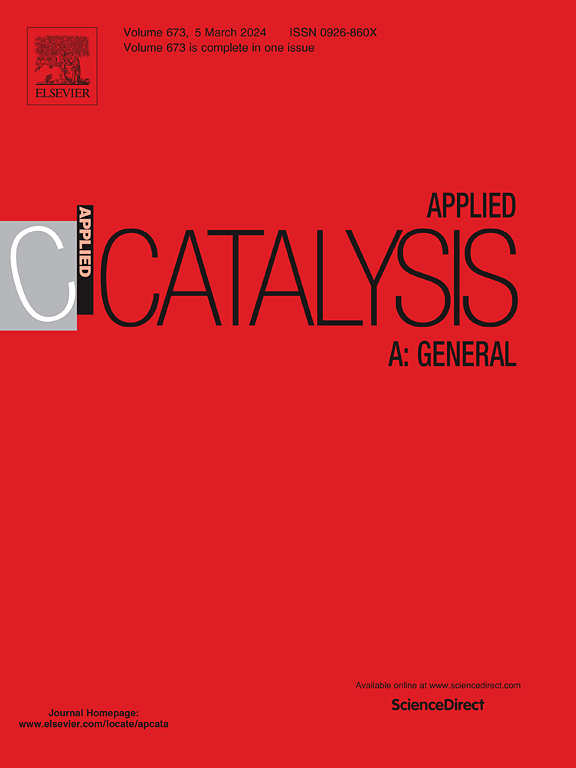基于Cu/CDs/BiVO₄三元核壳复合材料的可见光诱导四环素光催化降解:DFT计算及机理
IF 4.7
2区 化学
Q2 CHEMISTRY, PHYSICAL
引用次数: 0
摘要
采用水热法制备了新型Cu/Carbon dots/BiVO4三元核壳材料,并将其应用于光催化降解四环素。CCB-2复合材料表现出最好的光催化活性(96.8% %)。通过电子自旋响应检测,确定了主要物质为·O2-和h+。循环实验表明,CCB-2具有良好的稳定性和可循环性。通过计算、能带理论和中间体分析,揭示了光催化过程中的电荷转移途径。阐述了光催化机理和降解途径。发现在三元复合材料中建立了内置电子场,电子可以很容易地从内核Cu转移到层间碳点,再转移到外层BiVO4。Cu/碳点/BiVO4复合材料在辐照后实现了光催化载体的有效分离,并表现出优异的性能。该研究为加强铋基材料在环境净化中的应用提供了一条有前景的策略。本文章由计算机程序翻译,如有差异,请以英文原文为准。
Visible light-induced photocatalytic degradation of tetracycline based on Cu/CDs/BiVO₄ ternary core-shell composite: DFT calculations and mechanism
The novel Cu/Carbon dots/BiVO4 ternary core-shell material was prepared by hydrothermal method and applied for the photocatalytic degradation of tetracycline. The CCB-2 composite exhibited the best photocatalytic activity (96.8 %). The ·O2- and h+ were confirmed the main substances by electron spin response detection. The cycling experiments showed that CCB-2 has outstanding stability and recyclability. Based on calculations, energy band theory and intermediates analysis, the charge transfer pathways in the photocatalytic process were revealed. The photocatalytic mechanism and degradation pathways were elaborated. It was found that the built-in electronic fields were established in the ternary composite and the electrons can easily transfer from inner core Cu to interlayer carbon dots and then to outlayer BiVO4. The Cu/Carbon dots/BiVO4 composite obtained the effective separation of photocatalytic carriers after the irradiation and then showed the excellent performance. This study provided a promising strategy to enhance the application of bismuth-based materials in environmental purification.
求助全文
通过发布文献求助,成功后即可免费获取论文全文。
去求助
来源期刊

Applied Catalysis A: General
化学-环境科学
CiteScore
9.00
自引率
5.50%
发文量
415
审稿时长
24 days
期刊介绍:
Applied Catalysis A: General publishes original papers on all aspects of catalysis of basic and practical interest to chemical scientists in both industrial and academic fields, with an emphasis onnew understanding of catalysts and catalytic reactions, new catalytic materials, new techniques, and new processes, especially those that have potential practical implications.
Papers that report results of a thorough study or optimization of systems or processes that are well understood, widely studied, or minor variations of known ones are discouraged. Authors should include statements in a separate section "Justification for Publication" of how the manuscript fits the scope of the journal in the cover letter to the editors. Submissions without such justification will be rejected without review.
 求助内容:
求助内容: 应助结果提醒方式:
应助结果提醒方式:


